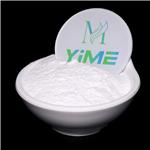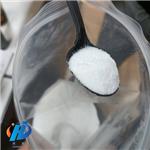Cetylpyridinium chloride: Applications in Processing Meat Products
Mar 16,2022
Cetylpyridinium chloride (CPC) is a surface-active QAC commonly added to toothpaste, mouthwash, and cough drop formulations due to its ability to impede attachment of plaque-forming bacteria to tooth enamel (McDonnell & Russell, 1999 ; Oyarzabal, 2005) .

Applications The efficacy of CPC as a decontamination fluid has been scientifically validated, and available data indicate that approved levels of CPC ( Table 14.5 ) are capable of significantly reducing levels of pathogens encountered at multiple stages of meat and poultry processing (Belk, 2001 ; Huffman, 2002 ; Sofos & Smith, 1998 ; Sofos, Kochevar, Bellinger et al., 1999). Cecure tm is a patented CPC solution (pH 7.1) developed by Safe Foods Corporation (North Little Rock, AR), and approved for use on fresh, processed, and RTE meat products (Safe Foods Corporation, 2008) ( Table 14.5 ).

Prior to its approval as an antimicrobial, Ransom et al. (2003) compared the ability of CPC (0.5%) and other approved intervention technologies to inactivate E. coli O157:H7 populations on inoculated beef carcass tissue samples. CPC induced greater reductions (4.8 log CFU/cm 2 ) than 2.0% lactic acid, 0.02% acidified sodium chlorite, 2.0% acetic acid, 0.02% peroxyacetic acid, 1.0% lactoferricin B, or 0.001% acidified chlorine (reductions of 3.3, 1.9, 1.6, 1.4, 0.7, or 0.4 log CFU/cm 2 , respectively); reductions in pathogen counts on CPC-treated lean beef tissue were also greater than other treatments, although differences were less extreme (Ransom et al., 2003) . Although applications of a 0.1% CPC solution were ineffective against C. jejuni attached to poultry skin, higher concentrations of CPC (0.5%) reduced pathogen counts more effectively than 10% trisodium phosphate (TSP) or 1.0% acidified sodium chlorite solutions (Arrit, Eifert, Pierson, Sumner, 2002) . Following longer exposures (30 s vs. 3–10 min), CPC was also more effective than TSP or acidified sodium chlorite against C. jejuni on poultry skin (Arrit et al., 2002) .
In another study, 0.1% CPC preinoculation treatments (ambient temperature, 10 min) were sufficient to inhibit the attachment of S. Typhimurium to poultry skin (Breen et al., 1995) , indicating that very low concentrations of CPC may mitigate future contamination events. During simulated chilling (4°C) of beef carcass tissue, CPC (0.1% or 0.5%) added to the water spray (1 min, every 30 min for 10 h) reduced initial non acid-adapted E. coli O157:H7 counts (5.1 log CFU/cm 2 ) to below the level of detection after 10 h and acid-adapted cells were no longer detected after 24 h (Stopforth et al., 2004) . Wateronly spray treatments reduced populations by about 1 log CFU/cm 2 (Stopforth et al., 2004) , while activity of CPC and other antimicrobial solutions (e.g., lactic acid) decreased against acid-adapted inocula of the pathogen. When applied to RTE polish sausages inoculated with L. monocytogenes (3–7 log CFU/g), CPC treatments (1%, 25°C, 30 s, 20 psi spray) immediately reduced pathogen counts (by 1–3 log CFU/g) and inhibited survivors for 42 days (0°C and 4°C) (Singh et al., 2005) ; no negative impacts on product color or texture were observed.
- Related articles
- Related Qustion
- Side effects of Lanolin Jan 13, 2022
Cetylpyridinium chloride (CPC) is a quaternary ammonium salt antiseptic that is used in many over-the-counter personal-care products: mouthwashes, toothpastes, lozenges, and breath and nasal sprays, to name a few.
- The Application of Cetylpyridinium Chloride and Related Information Mar 4, 2020
Cetylpyridinium chloride (CPC) is a white powder that is very soluble in water and alcohol. In this compound, the quaternary nitrogen atom is a member of an aromatic pyridinering.
Stanozolol can be administered orally or intramuscularly. Some of its therapeutic uses include the treatment of aplastic anemia and hereditary angioedema.....
Mar 16,2022APIAzithromycin was obtained by Beckman rearrangement of the oxime derivative of the ketone of erythromycin, leading to a 15-membered macrocycle, followed by its reduction and N-alkylation.....
Mar 16,2022APICetylpyridinium chloride
123-03-5You may like
- Why is Malic acid used in food
May 13, 2024
- Is mineral oil safe?
May 13, 2024
- What is Citric acid and sodium citrate?
May 11, 2024
Cetylpyridinium chloride manufacturers
- Cetylpyridinium chloride
-

- $0.00 / 1kg
- 2024-05-29
- CAS:123-03-5
- Min. Order: 1kg
- Purity: 0.99
- Supply Ability: 50000kg
- Cetylpyridinium Chloride
-

- $35.00/ kg
- 2024-04-28
- CAS:123-03-5
- Min. Order: 10kg
- Purity: 99%
- Supply Ability: 1000kg
- cetylpyridinium chloride
-

- $15.00/ kg
- 2024-04-27
- CAS:123-03-5
- Min. Order: 1kg
- Purity: 99.912%
- Supply Ability: 10ton




